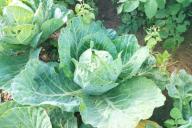A small action that we repeat every day actually raises many questions.
How much of this paste should I squeeze onto the brush?
Probably everyone has asked themselves this question at least once, watching commercials where a toothbrush literally drowns in toothpaste. It's time to sort out this pressing issue.
The Myth of the Big Pea of Toothpaste
Many people, imitating that same advertisement, apply a decent amount of paste to the brush. It is believed that the more paste, the better the result. However, in reality, this is not so.
Too much paste will not only not enhance the cleaning effect, but can also lead to undesirable consequences. After all, the main thing in cleaning is the correct technique, not the amount of paste.

Dentists' Advice: Size Matters
Dentists all over the world agree on one thing: a very small amount of toothpaste is enough to clean your teeth well.
For adults, the recommended serving size is a “pea” about the size of a little fingernail. And for children under 6, it’s even smaller, just a “dab” or “drop” about the size of a grain of rice.
Why so little? The answer is simple: toothpaste performs its main function – removing plaque and dirt – even in small quantities.
Why You Don't Need Too Much Toothpaste
Too much toothpaste can cause several problems. First, the foam that forms when brushing can obscure your vision during the process, making it difficult to thoroughly clean all surfaces of your teeth.
Secondly, using too much toothpaste can make us tend to brush less thoroughly, hoping for the “magic power” of more toothpaste. Finally, swallowing large amounts of fluoride toothpaste, especially for children, can be harmful.
Many people simply apply toothpaste across the bristles and leave it at that. But there is a better way.
Dentists recommend applying the paste along the bristles of the toothbrush. This way, the paste is better distributed and works more effectively when cleaning. In addition, when applied this way, the paste is less likely to get on the gums.
Choosing a Toothpaste: What to Look for
In addition to the amount of paste, its correct choice is no less important. Pay attention to the composition, especially the presence of fluoride and other active components.
Choose a toothpaste that suits your needs: for sensitive teeth, whitening or anti-caries. Remember that no toothpaste, even the best one, can replace the correct technique of brushing teeth and regular check-ups with a dentist.








